Finnish Sauna: 11 Blatant Lies We Need to Bury for Good
Most people have heard about a Finnish sauna and may even think they know what it is.
But what if I, as someone of Finnish origin and with 35+ years of sauna experience, told you that most things they tell you about Finnish saunas are actually false?
And not even just a little faulty, but blatant lies? That’s right.
As I read what some of the top Google results have to say about Finnish saunas, I could instantly tell many of the writers don’t know the first thing about saunas, have never been to a real sauna, and definitely have never bought and built one like I have.
One source particularly made my blood boil: not only were most of the claims wrong, but they also didn’t even mention the quintessential aspects, such as löyly (= steam), that Finnish saunas are all about.
When I visited that site’s About page to find out who has the audacity to spew out nonsense like that, I found out the site was a Spanish pool company.
What does that teach us? Never let a Spanish pool company tell you anything about Finnish saunas! They may know their soccer and tortilla de patatas, but shouldn’t take part in a Finnish sauna discussion if they’re not familiar even with the most basic concepts!
I compiled all the common lies and misconceptions that I see all the time about saunas, so let’s debunk them and see what really makes a sauna Finnish.
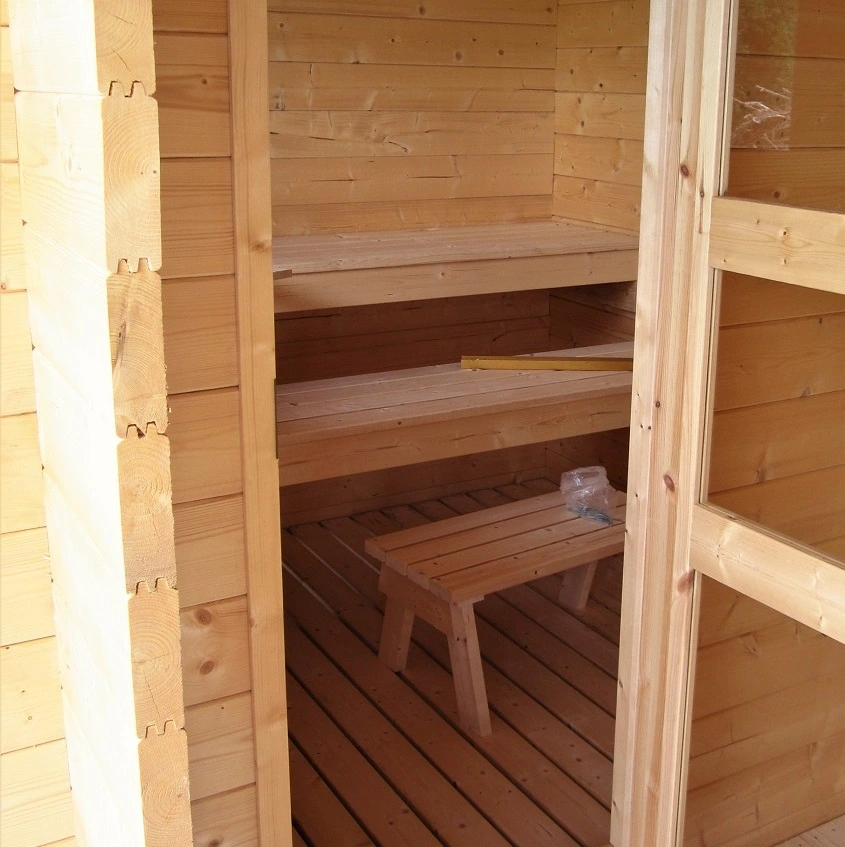
What Is a Finnish Style Sauna? + 11 Lies
Finnish sauna means the same as traditional sauna: if you go to or buy a traditional sauna, it will be Finnish.
What happens in a Finnish sauna? The sauna will have a sauna heater (either wood-burning or electric) with sauna rocks, on top of which you’re supposed to throw water to produce steam (löyly in Finnish).
All Finnish people know and agree that löyly (= steam produced by the rocks) is the whole point of saunaing.
You sit or lay on the sauna bench of your choice (the higher you sit, the hotter it is), but you don’t sit there for long periods of time at one go, but take breaks in between.
When you buy a traditional sauna in the US or UK, for instance, the sauna heater brand is almost always Finnish, Harvia being the most common. Huum is an Estonian brand, but Finnish sauna heaters dominate the market all over the world.
Sauna brands such as Harvia, Narvi, Helo, Kota, Mondex, Iki, Tulikivi and Aino are all Finnish brands.
What if you’ve been to a public sauna, but no water was thrown on the sauna rocks, or it was even forbidden to use water? That’s ALWAYS the result of incorrect sauna use. It’s very common in the US.
You can hear it all below, told by Finnish Aurora who moved to Los Angeles: her gym has a Finnish sauna with a Finnish sauna heater, but you’re still not allowed to throw water, people are saunaing in their workout gear and shoes (!), listening to music, and scrolling their phone… must I go on?
This kind of behavior has Finnish people gasping with shock! Unfortunately, the wrong-doing doesn’t end there.
Lie #1: Finnish Saunas Are Dry Saunas
The biggest problem with this lie is not the level of dryness (or wetness) that we could debate about, but that many people mistakenly think a “dry sauna” means a sauna is used dry, which is false.
Dry sauna is the worst name for a traditional sauna, which is why it’s no wonder this kind of classification (dry vs. wet) doesn’t exist in Finland or in Finnish.
You will never hear anyone talking about “dry sauna” (kuiva sauna) or “wet sauna” for that matter (märkä sauna) as these concepts are pure gibberish that don’t mean anything. Absolutely nobody would understand what you’re saying.
As you’ll see below, water is used in a Finnish sauna, leading to lots of steam and humidity, making the “dry sauna” nonsense even more ridiculous.
Whenever you see an online source talking about Finnish saunas, and labeling them as dry, and not even mentioning throwing water and löyly, it’s the perfect signal for you to leave the site immediately.
It’s a tell-tale sign that the writer has no real sauna knowledge, which leads them to just copying the same misinformation everyone else is saying in English.
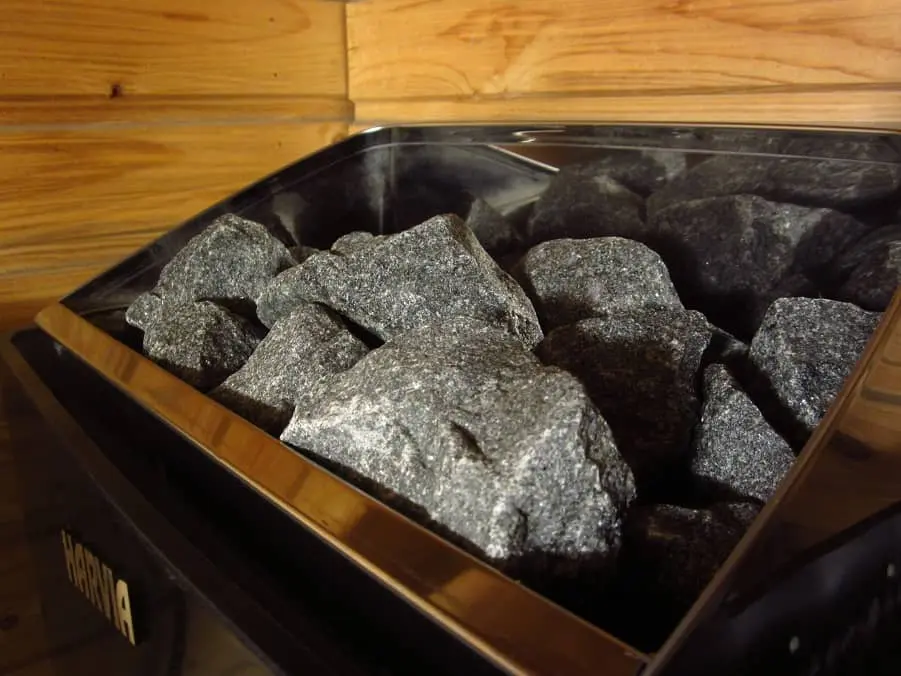
Lie #2: Steam Rooms Are Wet Saunas
Steam rooms may bet wet, but they aren’t saunas.
This lie is the other side of the “dry sauna” hallucination: “since traditional saunas are dry saunas, steam rooms must be wet saunas.”
Just forget about the whole dry vs. wet debacle and move on as a wiser human being.
Some sources refer to Finnish saunas (or traditional saunas in general) as steamy saunas or Finnish steam saunas. While these can confuse people with limited sauna knowledge (and make them think of steam rooms), these terms are actually much more accurate than the very problematic dry sauna.
Lie #3: Finnish Sauna Equals Detoxification
Detoxification is a scam and a pseudoscientific idea commonly attached to infrared saunas.
Let’s keep it that way: let’s never extend this nonsense to Finnish saunas that are known for quality research, lasting for decades with thousands of participants.
The same can’t be said for infrared “saunas” that lack research in all areas: that’s why you see infrared cabin sellers regurgitating the detox claims more than humanly possible.
You’ll never see any Finnish sauna study mentioning “detoxification;” when paired with saunas, the whole word is a shameful label no legitimate researcher would ever want stamped on them.
In plain English: you don’t need saunas for detox as your liver and kidneys do that work for you.

Lie #4: Finnish Sauna Temperature Is Around 175-215 F (80-100 C)
To be fair for all the sites providing false claims, this particular one they picked from Wikipedia that can be accurate. Unfortunately with this claim, it’s more wrong than right.
Very few people in actuality prefer a sauna this hot, the ideal temperature range being 140-185 F (60-85 C), with 160-180 F (70-80 C) as the most optimal range.
Multiple studies suggest that for maximum health benefits, you shouldn’t go any higher than 175 F (80 C).
I have often seen sauna heat being described as “extreme heat;” it’s no wonder some people feel this way if and when they think that temperatures way above 200 F are not only “normal” but something you should strive for.
That’s certainly not the case.
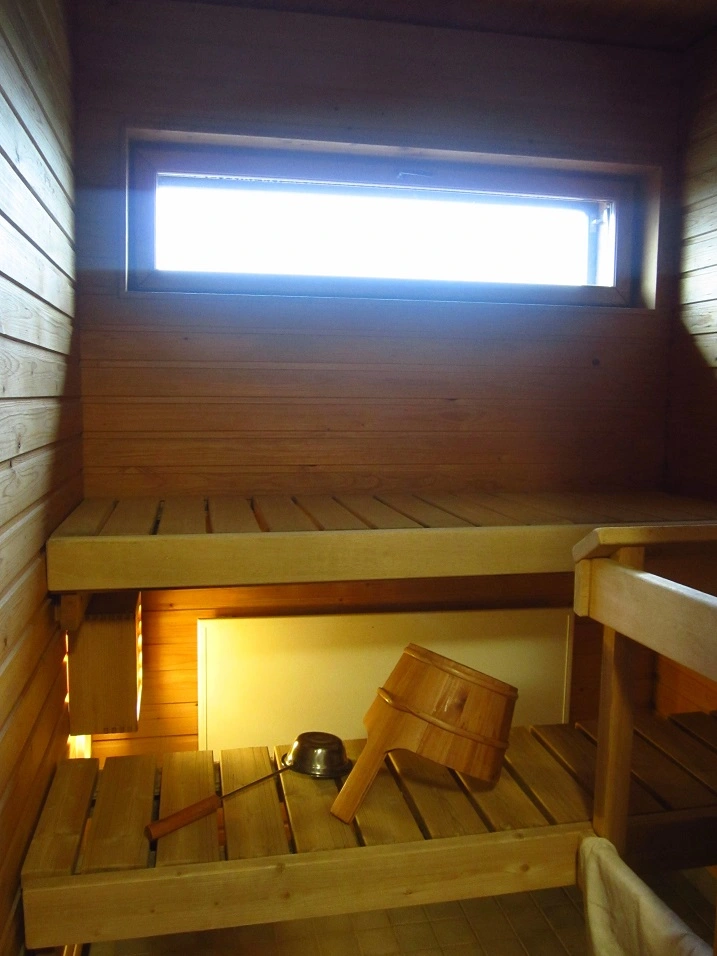
Lie #5: The Humidity Level Is Kept at 5-20% in a Finnish Sauna
As you can imagine, this lie goes hand in hand with the “dry sauna” nonsense. After all, it would be impossible to label any sauna as dry if the humidity level reached 70%, for instance.
Well, that’s exactly what happens in a Finnish sauna: you throw water on the hot sauna rocks and get lots of steam that drastically increases the humidity level.
It’s easier to achieve a higher humidity level in a sauna that isn’t too hot. The hotter it gets, the drier it also gets. Humidity levels as high as 70% and 80% have been reported after löyly when using Finnish saunas.
Another lie in this lie is that the humidity level is “kept” at a certain level. This couldn’t be farther from the truth. The humidity level varies in a Finnish sauna just like it’s supposed to, as it increases every time you throw water, and decreases in between the pouring of löyly.
(I have recently ordered two hygrometers for my sauna in order to test what kind of numbers I get, so stay tuned for that!)
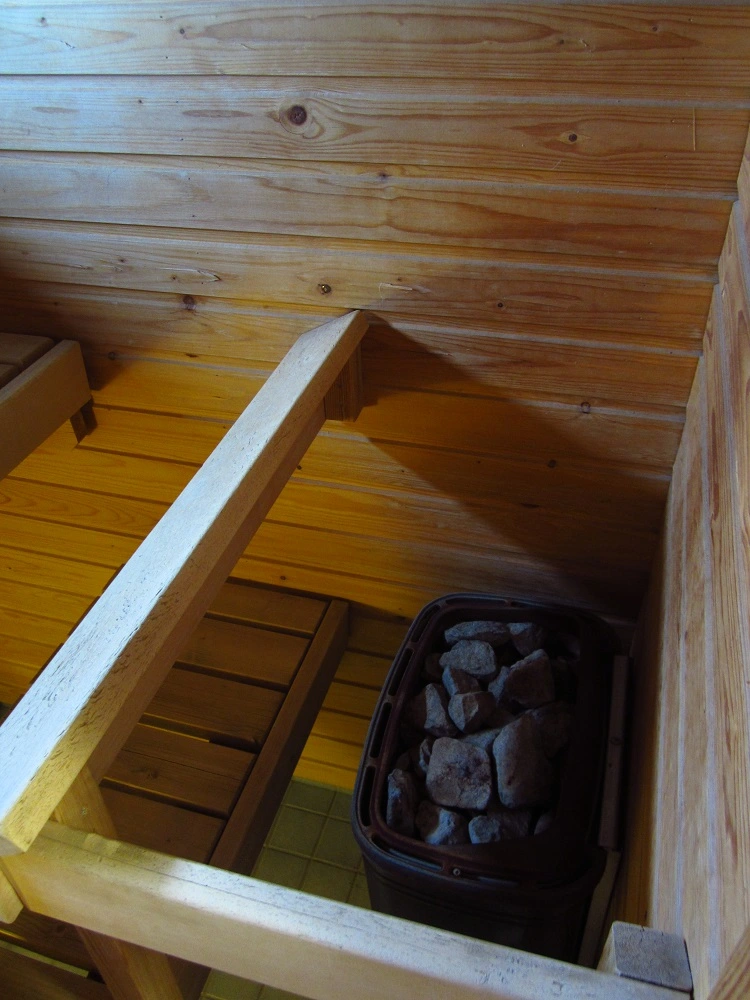
Lie #6: A Music System and Speakers Are Part of Finnish Sauna
While moisture-resistant speakers for saunas are nowadays sold in Finland, the majority of Finns feel a sauna is no place for music.
(Also, note that I wrote moisture-resistant speakers; why on earth would you need them as there is no moisture in a “dry sauna”?! By this point, I hope you’ve started to see just how laughable and false that concept is.)
Let’s say you had been invited to some sort of sauna party, then music would be much more okay than in a home sauna where you want to relax after a long day.
But if you really wanted speakers and music in your traditional sauna, would it ruin the Finnish nature of it? No, of course not. Just don’t expect your sauna to automatically come with a music system as it’s not part of Finnish sauna culture.
If you go to a public sauna in Finland, bringing your own music with you, be prepared for angry looks and being eased out!
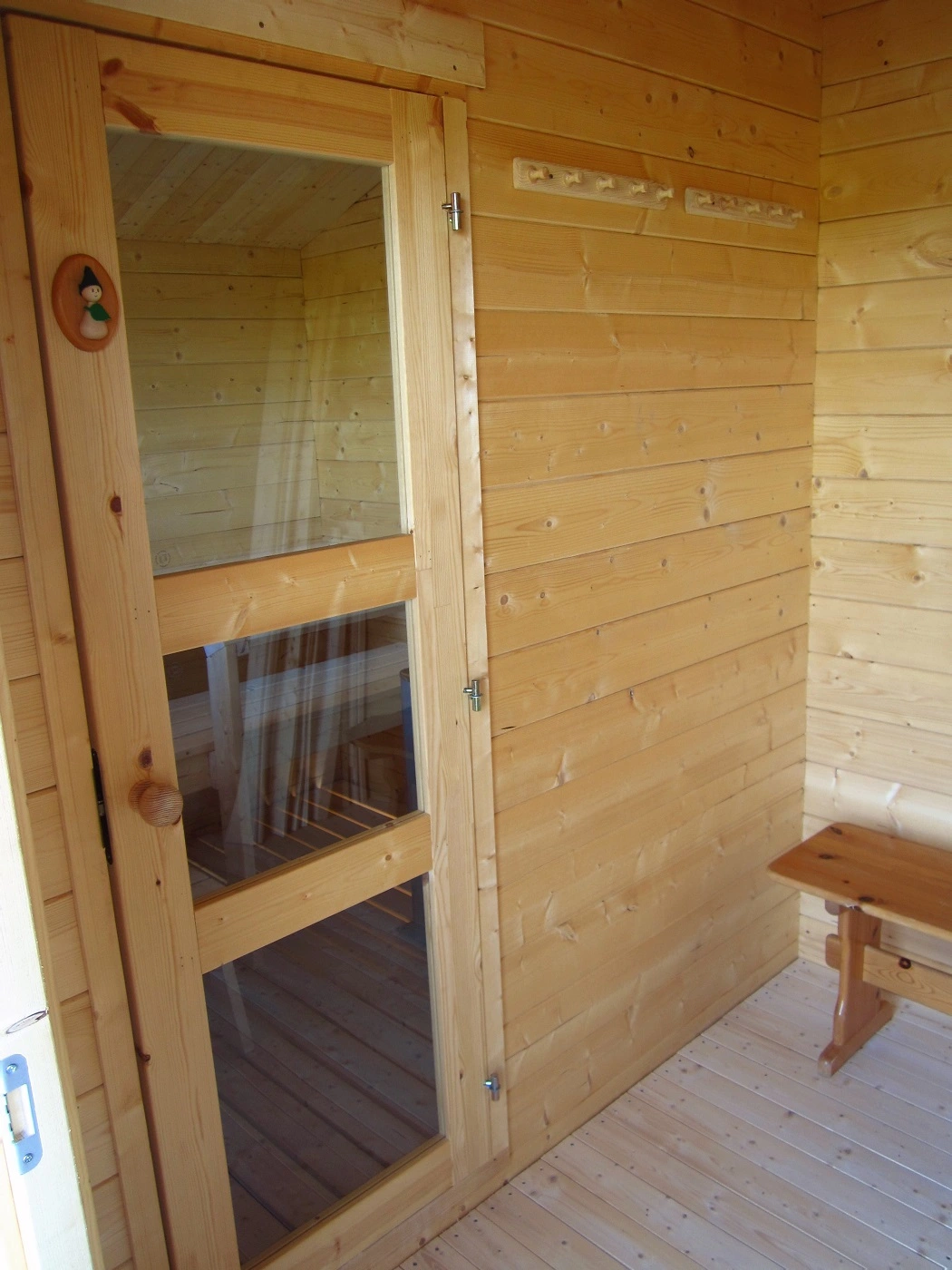
Lie #7: You Should Limit Your Finnish Sauna Sessions to 2 per Week
I have no idea why the Spanish pool company thinks it can give people recommendations like this, but there is no reason to limit your sauna sessions to only two if you’d like to and have a chance to sauna even more often.
A Finnish sauna study, that lasted for 15 years and had 1,688 participants, found that the people who went to sauna the most, 4-7 times a week, had the lowest risk of CVD (= cardiovascular disease) mortality compared to other groups that went to sauna less frequently.
Lie #8: Sauna Hats Are Part of Finnish Sauna Culture
This lie is an interesting one. After all, if you’re not familiar with Finnish sauna culture but know that everything sauna-related usually comes from Finland, it’s reasonable to guess that sauna hats are also Finnish.
Well, they’re not. While Finnish saunas have existed for thousands of years (more on that below), sauna hats were introduced as a gimmick sometime in the 2000s.
You may see one person wearing a really crazy-looking sauna hat in a Finnish sauna themed YouTube video with millions of views, but that’s for show, and nothing that the general public wears or needs.
Most people don’t wear a hat when they’re indoors and at home. The idea that when these same people go to sauna, THEN they put a hat on, with absolutely no point as the hats don’t even protect your hair like a wrapped towel does, is utterly crazy.

Lie #9: You Wear Clothes in a Finnish Sauna
This is what the National Geographic has to say about nudity in a Finnish sauna:
“Nudity is very normal. Historically, this was to keep the sauna as clean and pure as possible, and today Finns still prefer to sauna naked.”
I find that “still prefer” part so cringey and condescending! A statement like this suggests that wearing clothes would somehow be more sophisticated or modern, but instead of Finns choosing to be better people, they have stuck with their old, lesser ways.
What does the writer have in mind, wearing your entire winter wardrobe when in the sauna?
Finns don’t sauna naked because they “still prefer” it, but because wearing clothes in a sauna is effing stupid. Finns knew it thousands of years ago, and they still know it.
When saunaing, clothes have nothing to bring to the table. They’re completely redundant and only translate to extra laundry.

Finns in Finland never wear clothes in their own saunas and usually not in public saunas either (there are different sauna sections for men and women).
If you go to a public mixed sauna, then many choose to cover their private parts. It shouldn’t have to be needed, but there are so many people with no manners and no respect for the Finnish sauna etiquette that women especially may feel they have to hide their body from intrusive looks.
The Finnish sauna etiquette has always maintained that you’re not supposed to look at anyone’s body in a sauna. Sauna isn’t a place for peeking and perversions.
Let’s say someone has a big scar in their thigh; you essentially shouldn’t even notice it, let alone continue gawking. But not even all Finns know this, so it for sure can’t be expected from foreigners.
If you’re an American or Canadian, for instance, wondering do you wear clothes in a Finnish sauna, for you the answer is most likely yes.
Even if you wanted to sauna the only correct way – naked – it may be forbidden in your local sauna or you could be the only naked person there which could feel uncomfortable.
But if you buy your own home sauna, or go to a sauna in Finland, definitely try it in the nude! Just bring a sauna bench towel with you to sit on.
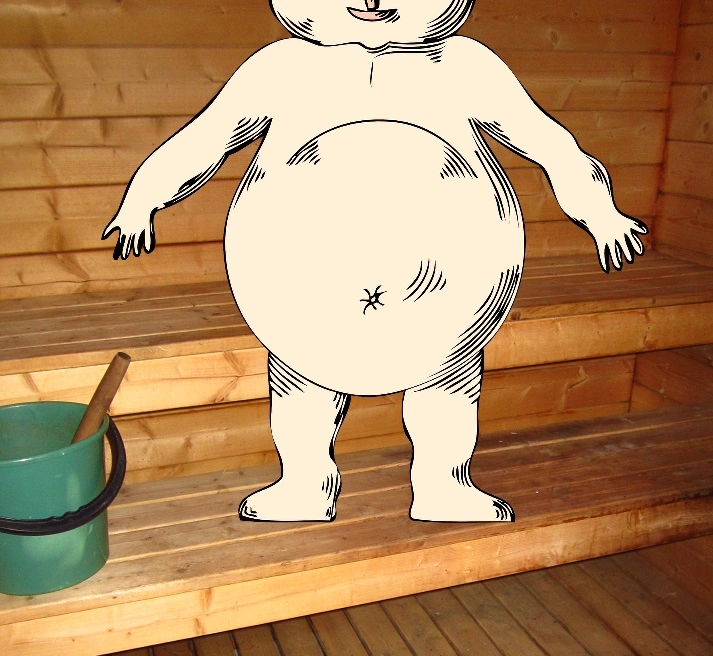
Lie #10: You Can Bring Your Phone to Sauna
This is not so much about whether you can bring your phone to a sauna, i.e., whether your phone can withstand the hotness and humidity without breaking (with most phone brands it’s a strict no anyway), but a question of whether you should bring your phone with you.
And the answer is NO. Phones nowadays represent noise, distractions, unnecessary notifications, mindless scrolling, and passivity.
Sauna is the opposite of all that: it’s where you relax, breathe, and empty your mind, leading to calmness that only a sauna session can bring.
Lie #11: Sauna Is Great for Weight Loss
This lie is much more used with infrared “saunas,” but I do see it a lot with traditional saunas as well.
Sweating in a sauna leads to temporary water loss, and not necessarily even to that since you should keep yourself hydrated (= quench your thirst) during and after your sauna session.
But there is no actual weight loss (= fat loss) happening as you sit in a sauna. It makes perfect sense too since you need to engage in physical exertion in order to burn extra calories.
It’s sometimes said that saunaing mimics exercise as your heart rate increases and your body temperature rises a little. Yes, you do experience those sides of exercise when saunaing.
It’s the most important part of exercising that’s missing, however, when you sauna, and that is moving your body. So no, sauna doesn’t equal exercising and doesn’t lead to weight loss.

Who Invented Sauna?
You may have already known that saunas come from Finland. Does that automatically mean that saunas were also invented in Finland?
There isn’t a simple yes or no answer because of three reasons:
🔶 1. The history of sauna-like structures around the world is poorly known, and new discoveries can be made even today: in 2019, they found a Mayan steam sauna in Guatemala, dating back 2,500 years.
Finnish saunas are estimated to have existed between 3,000 and 8,000 years, with some sources claiming even up to 10,000 years. The first saunas are believed to have been “ground” saunas, meaning holes dug in the ground, then stacked with rocks, and with a tent-like structure built on top.
Where did sauna originate? Considering that saunas are that old, the Finland of today didn’t exist thousands of years ago. It was a geographical area with deep-rooted sauna culture, and is now known as Finland.
This explains why people in Estonia, for instance, also have a thriving sauna culture (that is very similar to the Finnish one).

🔶 2. In order to prove an invention is yours, you need to register a trademark or copyright and get a patent. All these concepts are fairly new and couldn’t be applied to saunas thousands of years ago! That’s why it’s possible we’ll never know for sure who made sauna for the first time.
🔶 3. Where was sauna invented? Some sauna cultures were born independently of each other in different parts of the world.
A sauna-like sweat lodge invented by Native Americans, for instance, wasn’t born under Finnish influence, and neither did Native American traditions affect Finnish sauna culture.
What is known for sure, however, is that Finland made saunas their own. Nowhere else is sauna as loved, appreciated, understood, used, and studied as it is in Finland.
The first electric sauna heater was invented in Finland in 1938.
According to the Finnish Sauna Society, Finland also has the most saunas in the world, over 3 million in a country of 5.6 million people.
Between the years of 1860 and 1944, almost 400,000 Finnish people moved to North America, bringing their sauna culture with them. It can still be seen today, mostly in Minnesota. That’s where the biggest American sauna enthusiasts come from!
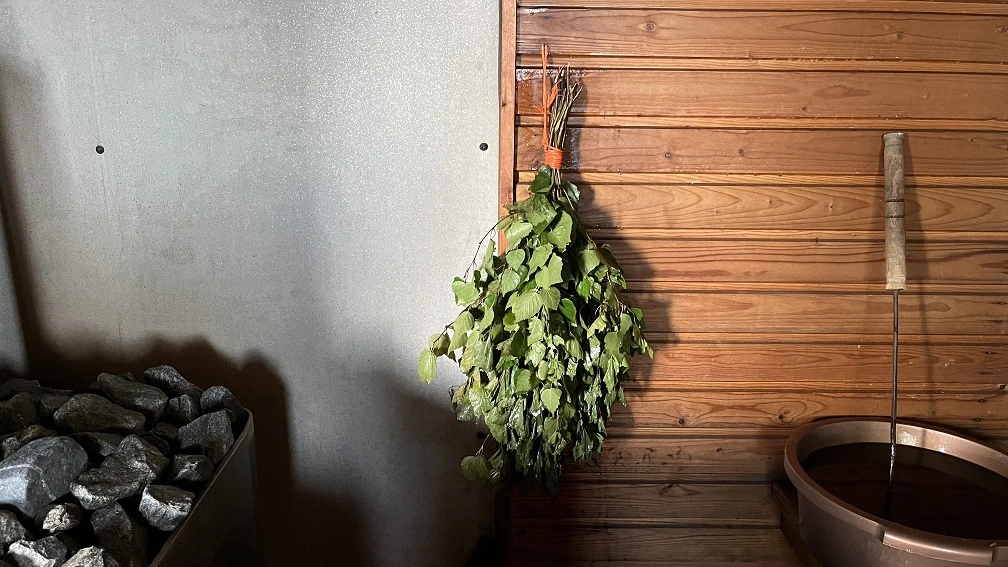
Frequently Asked Questions (FAQ)
1. What are the benefits of a Finnish sauna?
Finnish sauna benefits, supported by scientific research, include:
✅ Improved mental health and memory: regular sauna sessions (4-7 times a week) can lower the risk of severe mental health issues, including psychosis, by 78%, and reduce the risk of dementia and Alzheimer’s by up to 66%, when compared to people who sauna less.
✅ Improved cardiovascular health: sauna use lowers most people’s blood pressure, and improves heart function by increasing heart rate and improving circulation, which reduces the risk of cardiovascular diseases and ischemic stroke.
✅ Pain relief: sauna heat alleviates muscle tension and can help with headaches, rheumatic pain, and fibromyalgia, but not in all cases. Sometimes heat can make pain worse.
✅ Boost for your immune system: frequent sauna users experience fewer flu and cold symptoms and lower inflammation markers, possibly enhancing overall immune function. Even asthma is rarer among those who sauna when compared to non-saunaing people.
✅ Skin health: saunaing doesn’t dry out the skin but instead strengthens its barrier, helping people with conditions such as psoriasis. Sauna steam in general accelerates the peeling of dead skin cells, resulting in plump and glowing skin.
✅ Enhanced well-being: saunaing is incredibly relaxing, reduces stress, and improves sleep.
Saunas are generally safe for most people, including those with chronic illnesses if their conditions are well-managed. Those with severe heart conditions or other serious illnesses should consult their doctor before going to sauna.
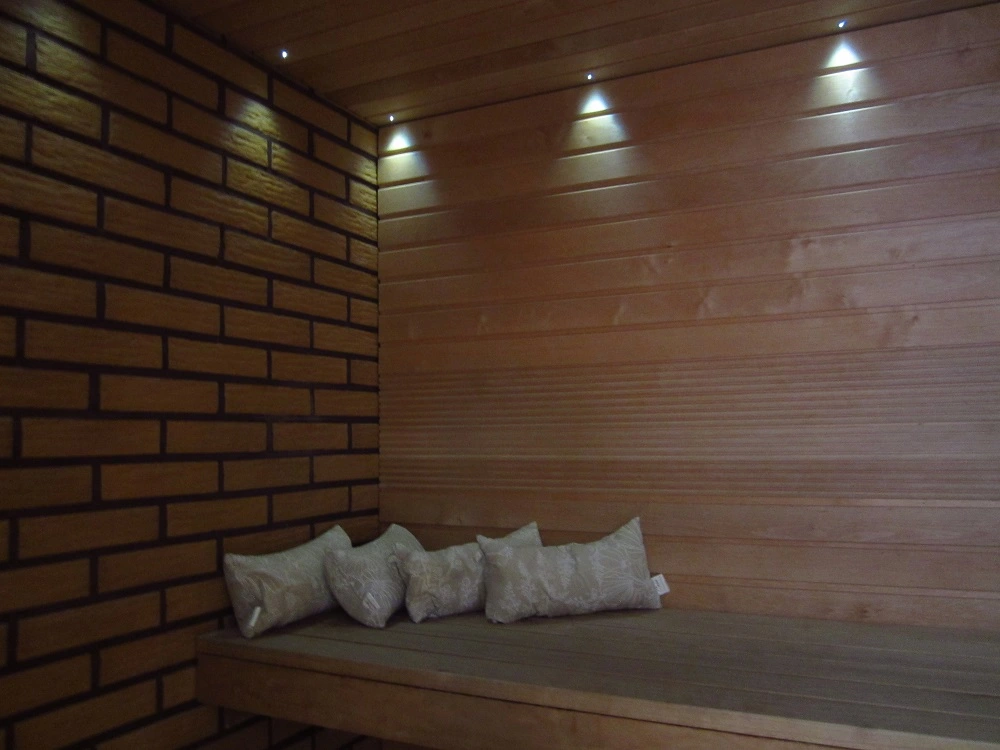
2. Which is better, a Finnish or an infrared sauna?
This is a no-brainer: a Finnish sauna wins an infrared one on all fronts.
And it’s definitely no opinion either, but based on pure facts: infrared “saunas” are notorious for junk science as there are such few legitimate studies done on them.
Most claims made on infrared cabins are belief-based, with no evidence to back them up. You can see it for yourself by checking whether the sleazy sales people cite any sources.
Whenever they do, most sauna studies they reference are (Finnish) sauna studies, done on traditional saunas that tell us nothing about infrared “saunas” and their claimed benefits.
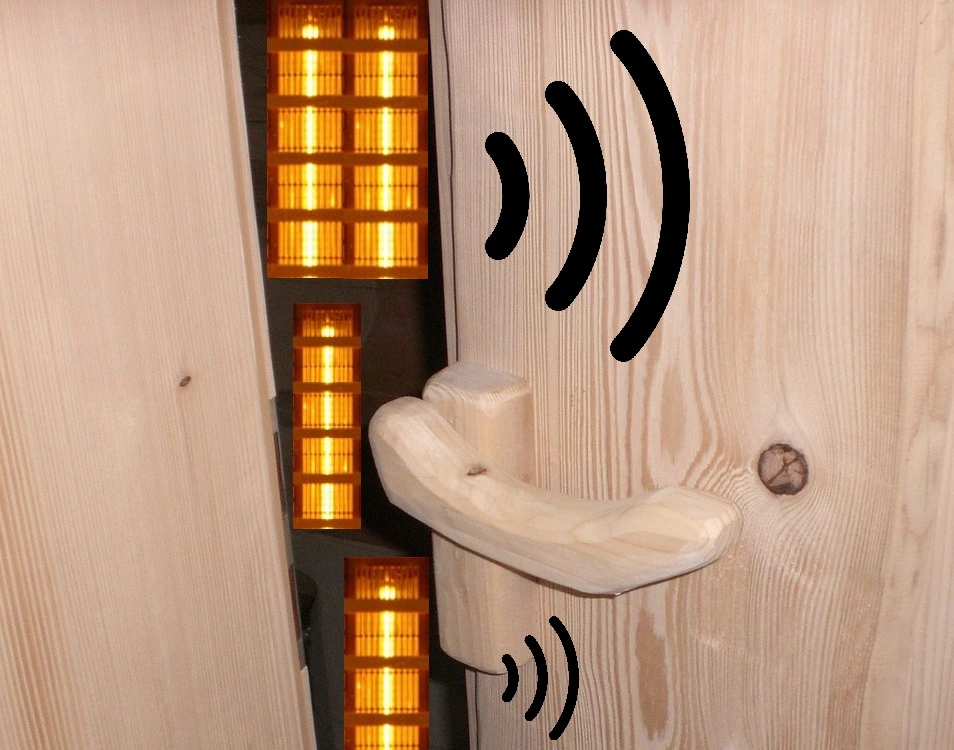
3. What’s the problem with the search intent “Finnish sauna near me?”
When you google Finnish sauna near me, you’re obviously expecting to find a public sauna near you that gives you an authentic Finnish sauna experience.
Unfortunately, as discussed and shown above, you’re more likely to find Finnish saunas that everyone is forced to use incorrectly.
And since you’re not allowed to throw water (löyly), which is the most important part of saunaing (!), it truly is like being offered a delicious hot dog, but then learning that you’re expected to eat it dry, without any ketchup, mustard, and relish.
If you are looking for a public Finnish sauna, I would call the establishment and ask whether they use their sauna in the way it’s supposed to be used.
After all, throwing water is not just a recommendation, but a must – not just for people, but for the sauna heater too:
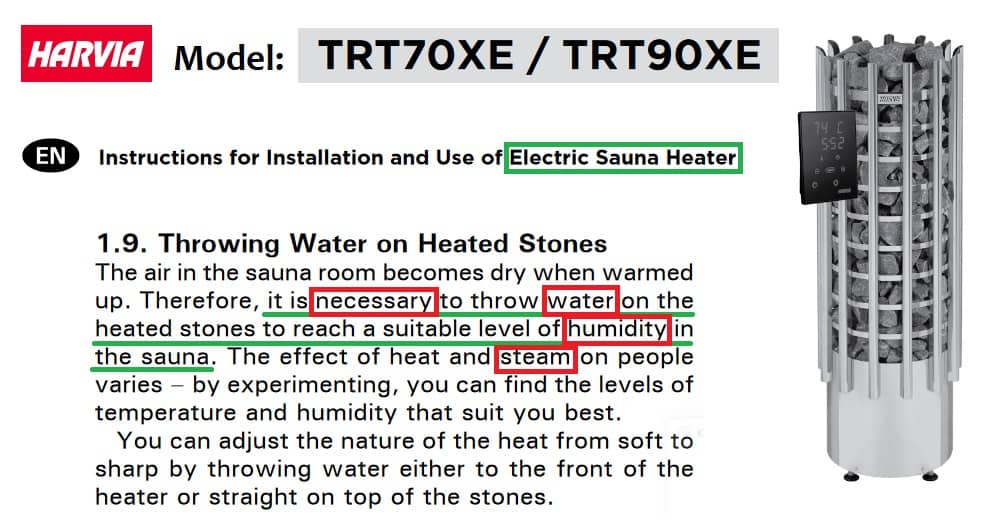
Final Thoughts
What did we learn? The amount of false information on Finnish saunas online is staggering.
The biggest reason for this is of course money. When questionable companies realize Finnish saunas are a hot topic (pun intended), they are going to write about them whether they know anything about the subject or not.
The good news is that they don’t have to get your money, and that’s what matters the most.
For your own sake, spend a few seconds checking where and from whom the sauna information you get is coming from.
Another great thing is that wherever you happen to live, the traditional sauna you buy for yourself is in most cases Finnish.
Many people have no idea how far the Finnish sauna empire extends: Almost Heaven Saunas, for instance, which is an American company, is actually owned by Harvia, the most known Finnish sauna brand!
The flip side of this greatness are public saunas that, despite being Finnish, are used incorrectly almost everywhere in the US, meaning you won’t get to experience anything Finnish in them.
But that can change when correct information like this article reaches more eyes!

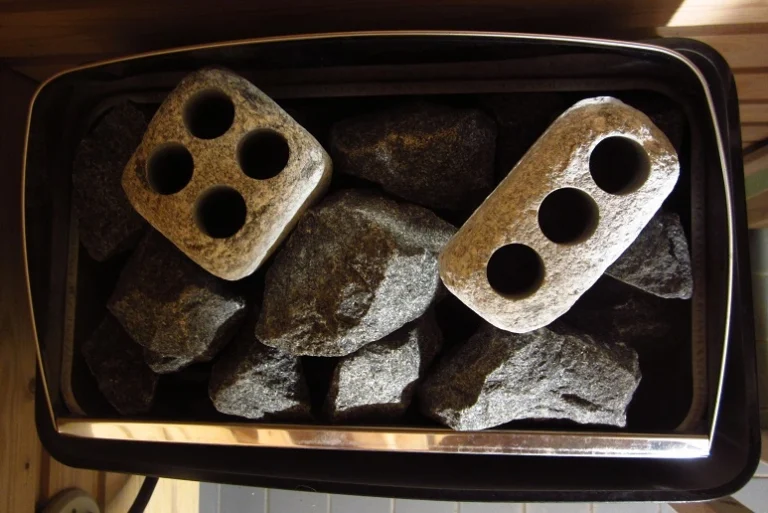

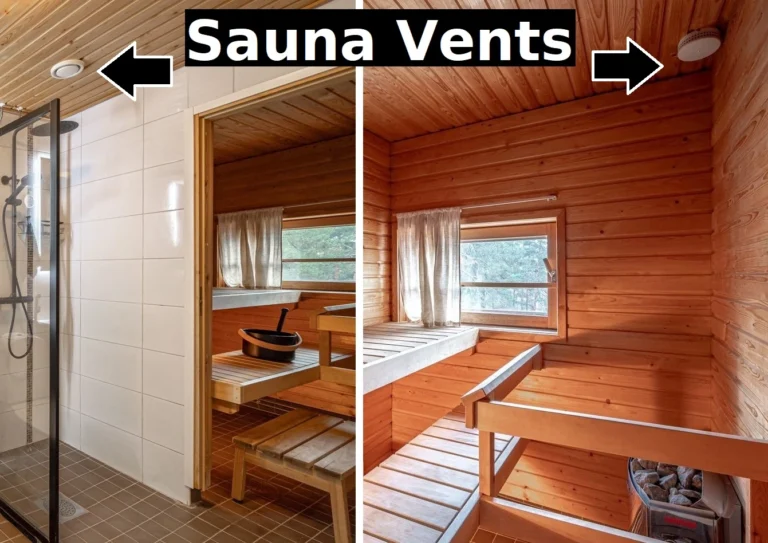
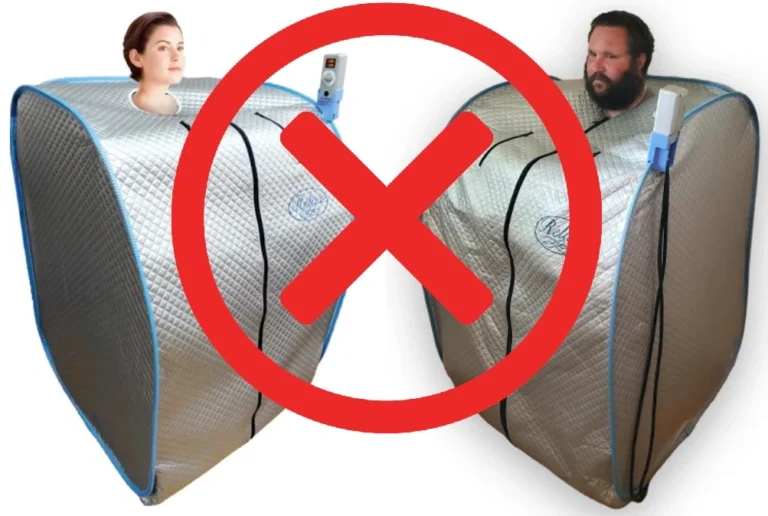

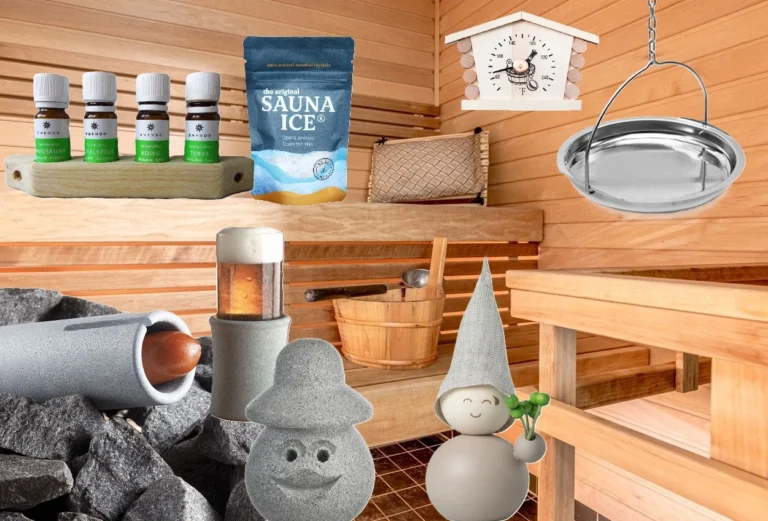
Thank you for all the information in your well written article. People online mentioning dry saunas had me scratching my head in confusion. Your article made simply perfect sense. Thanks again for sharing. Best wishes.
Thanks Rick, I’m so happy to hear you got suspicious when hearing about “dry saunas.” I wish more people viewed saunas like you!
Last week I was in a hotel sauna in Green Bay, Wisconsin, and immediately asked about the sauna when checking in. The receptionist emphasized how no water was to be used because they have a “dry sauna.” I could’ve started lecturing, but chose to just smile and not say anything. While in the sauna, the instructions prohibited pool water (which is correct because of the chlorine; besides, sauna water needs to be fresh, not water people have swum in), so I maybe would’ve sneaked in some tap water IF the sauna had been hot enough but it wasn’t! It was mildly warm in the beginning and only got colder even though the heater was on.
Now I know what’s even worse than a dry sauna: a dry and COLD sauna, which essentially translates to no sauna at all. Luckily I soon headed north to Michigan for better sauna experiences (they had a tap and a sauna bucket & scoop right next to the sauna heater 👍), so it’s reassuring to know even some hotels in the US get it right!